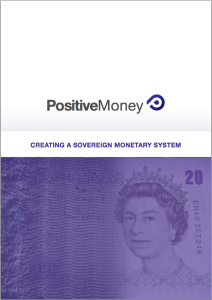Sovereign money system is not Monetarism

One of the common objections to the proposal to switch to a Sovereign Monetary System is: “This is a monetarist policy.”
Anyone who has read our proposals should understand that they are different from monetarism. Monetarists were obsessed with inflation, and believed that it was fine to allow unemployment to rise so long as inflation was kept under control. They tried to constraint the ability of banks to create money, which is nigh on impossible in the current system, as was shown by the fact that even though they raised interest rates, the money supply kept expanding. Monetarists did not seem to realise that there was a difference between money flowing into the financial and property markets and money flowing into the real economy. They had no concern with what the money was used for. They paid no attention to levels of personal debt, inequality and so on.
Currently, the Monetary Policy Committee attempts to control bank lending – and therefore the quantity of broad money in the economy – by influencing the interest rate at which banks lend to each other on the interbank market (for a good description see Clews et al., 2010). After the reform, the Money Creation Committee (MCC) would have direct control over the money stock and so there would be no need for the MCC to use interest rates to affect it. Instead the money stock would be controlled directly, with interest rates determined by the markets.
This has only a superficial resemblance to the monetarist policies of the 1980s. It is important to note that the main reason monetarism failed was because central banks were attempting to control the growth in bank deposits (mainly through bank lending) through restricting the monetary base. The theory was that the quantity of money on deposit at the central bank (reserves) could be used to restrict the quantity of deposits at private banks (broad money).
This policy was in part based on a money multiplier view of bank lending – that banks required deposits (or central bank reserves) before they could make loans. However, the money multiplier model gets causality the wrong way round – loans in fact create deposits and reserves are required by banks only to settle payments between themselves. In short, base money is endogenous to the creation of bank deposits and is supplied by the central bank on demand. Central Banks were unable to credibly restrict the supply of reserves to any private bank once it had made loans, as to do so could have led to the bank in question being unable to make payments to other banks. This could have led to a bank run and as such would have contravened the central bank’s remit to maintain financial stability.
However, under the reforms outlined here commercial banks would no longer hold deposits on their balance sheets – all money would exist on the central bank’s balance sheet (i.e. there would only be one quantity of money circulating in the economy, used by banks and non-banks alike). As a result, the central bank would not be attempting to control the creation of deposits on commercial banks’ balance sheets through limiting deposits on its own balance sheet; rather, as money would exist only on the central bank balance sheet, and because the central bank would be the only creator of money, the MCC would be able to control the money stock directly.
With the MCC having direct control over the amount of money in the economy, the interest rate setting Monetary Policy Committee at the central bank would no longer be needed and could be disbanded.
In addition, monetarists were mainly concerned with inflation, and saw all money creation as inflationary. In contrast, a sovereign money system recognizes that there are situations in which money creation actually raises demand and output rather than simply causing inflation.
Monetarists also saw inflation as the main threat to the economy, and were willing to let unemployment rise in order to keep inflation under control (although in reality this did not work). In contrast, proposals for a sovereign money system have a strong focus on how money creation can be used responsibly to boost employment and output.

This was an extract from the paper Creating a Sovereign Monetary System. It gives responses also to some other common critiques, such as:
“It would constrain the level of credit (lending), harming growth and the real economy.”
“Interest rates would be too high.”
“It would be deflationary.”
“It would be inflationary / hyperinflationary.”
“The proposal is central planning or requires control by an army of technocrats.”
“The shadow banking sector would simply create substitutes for money. Near-monies would emerge and the central bank would lose control of money creation.”
and others.